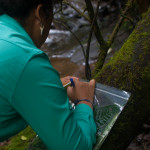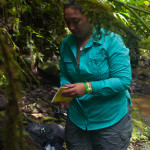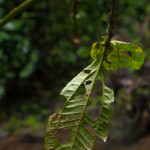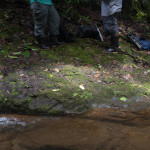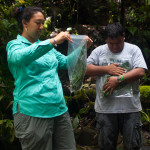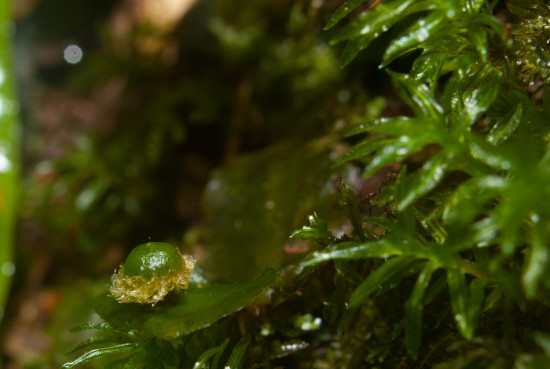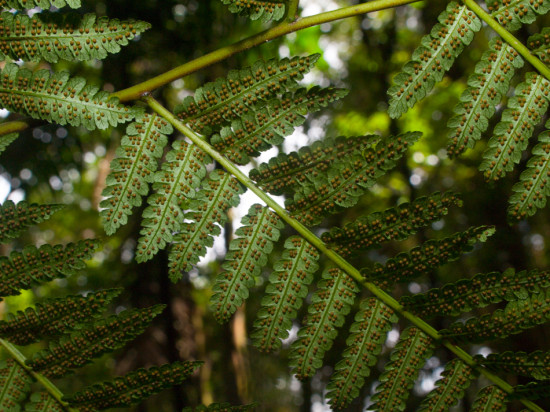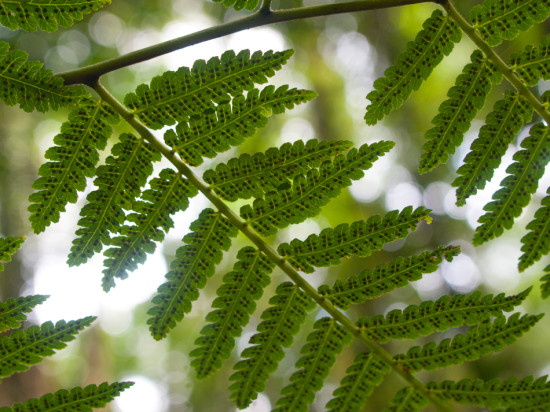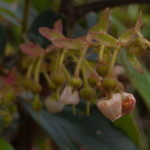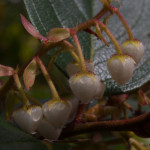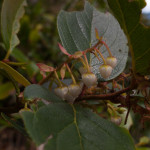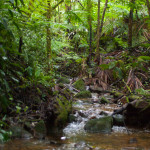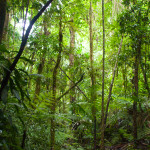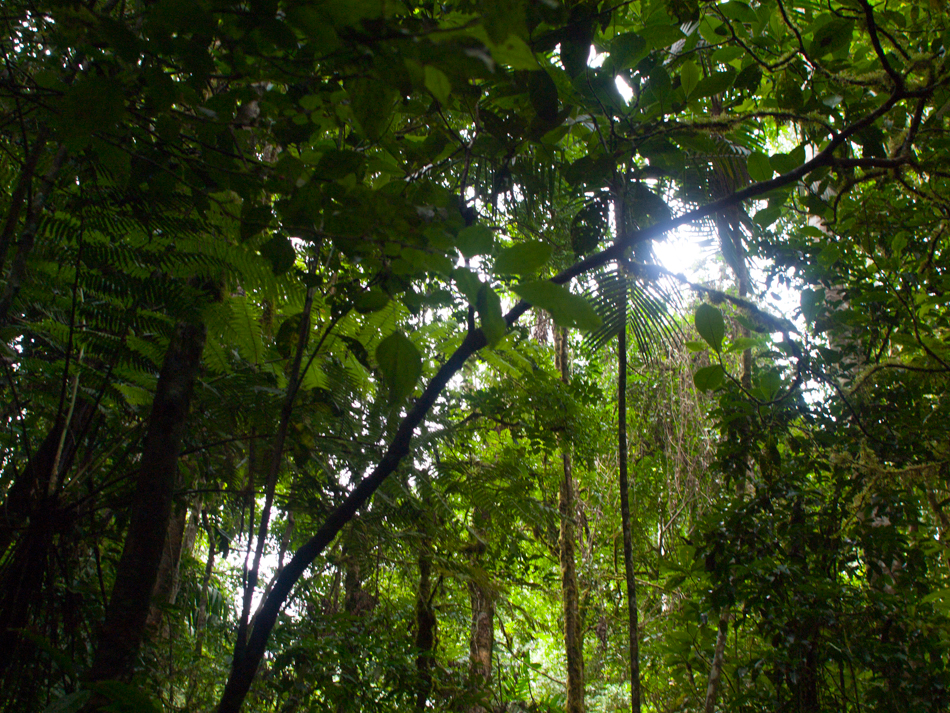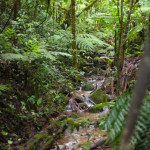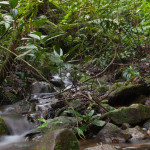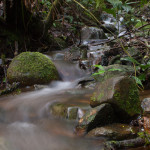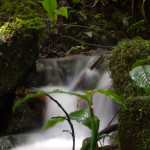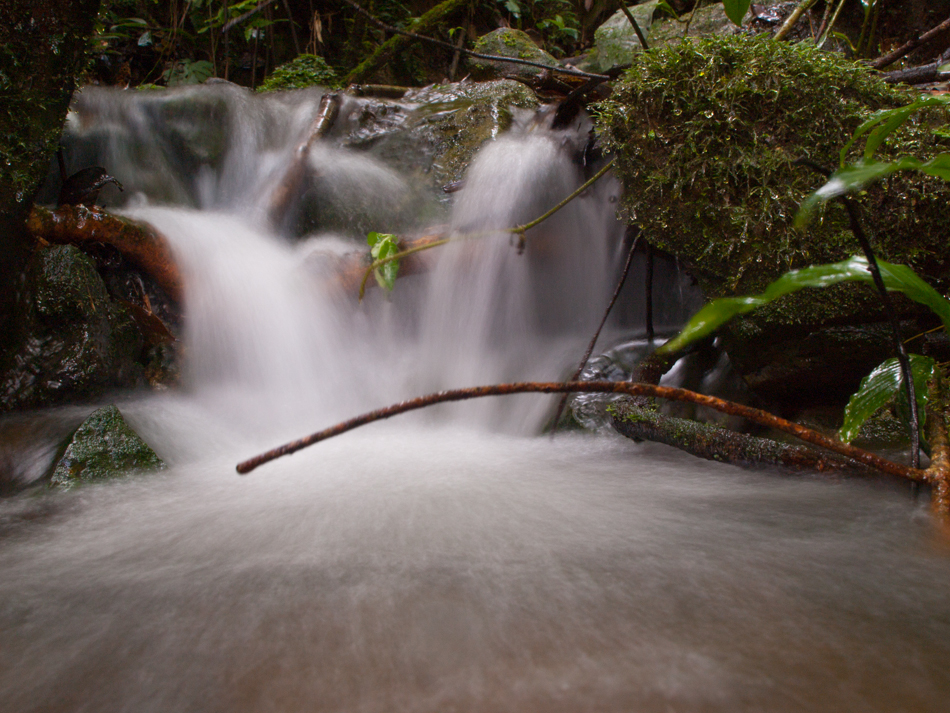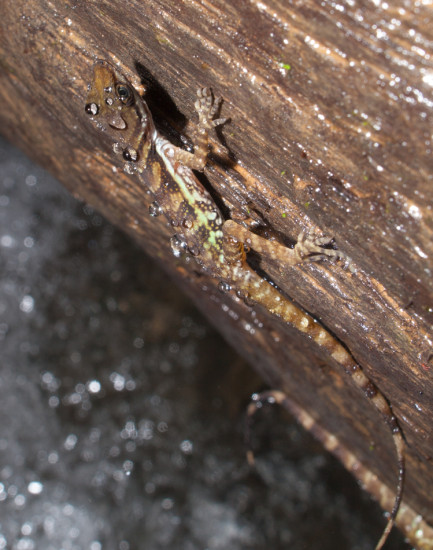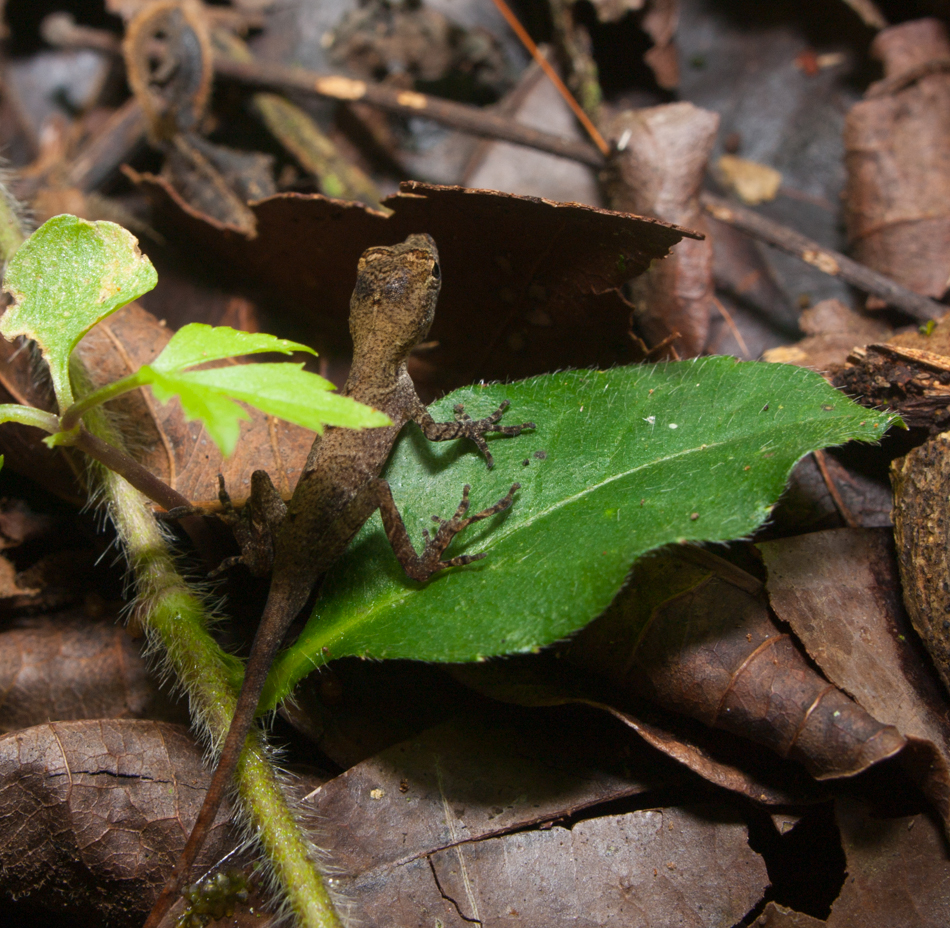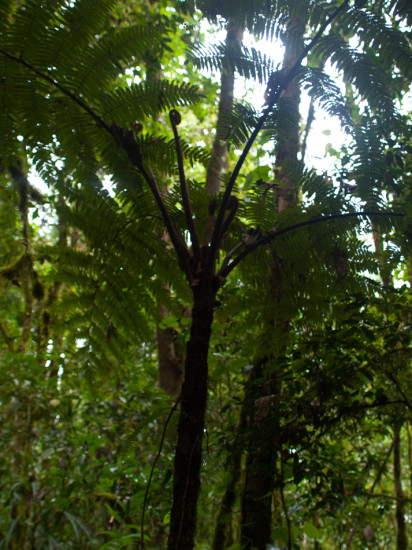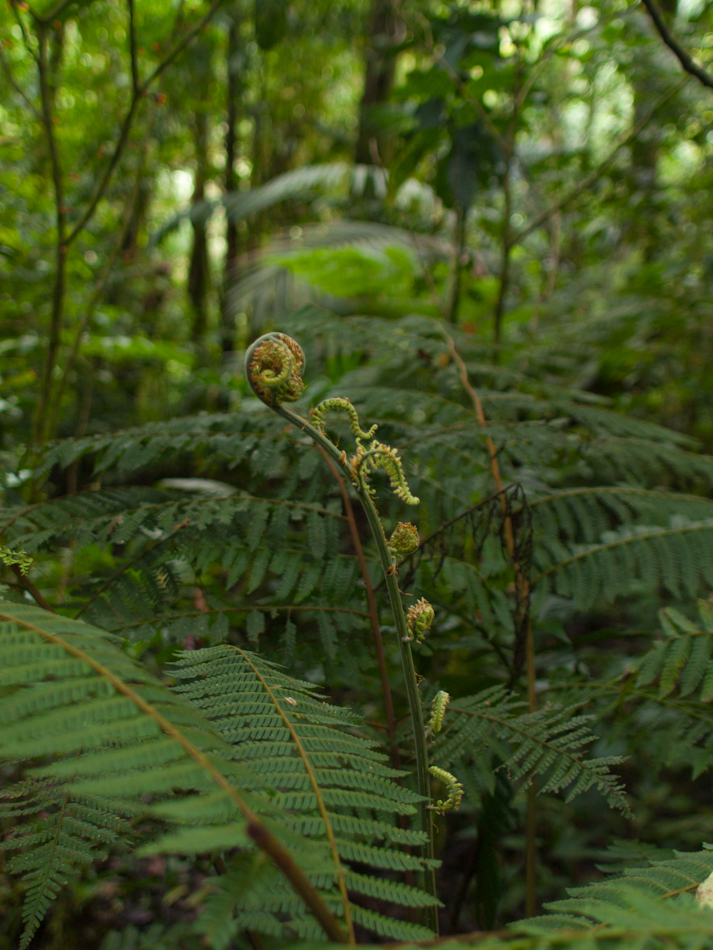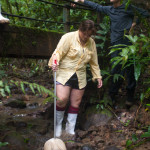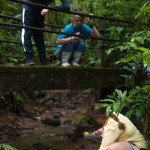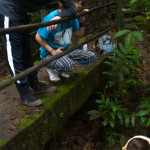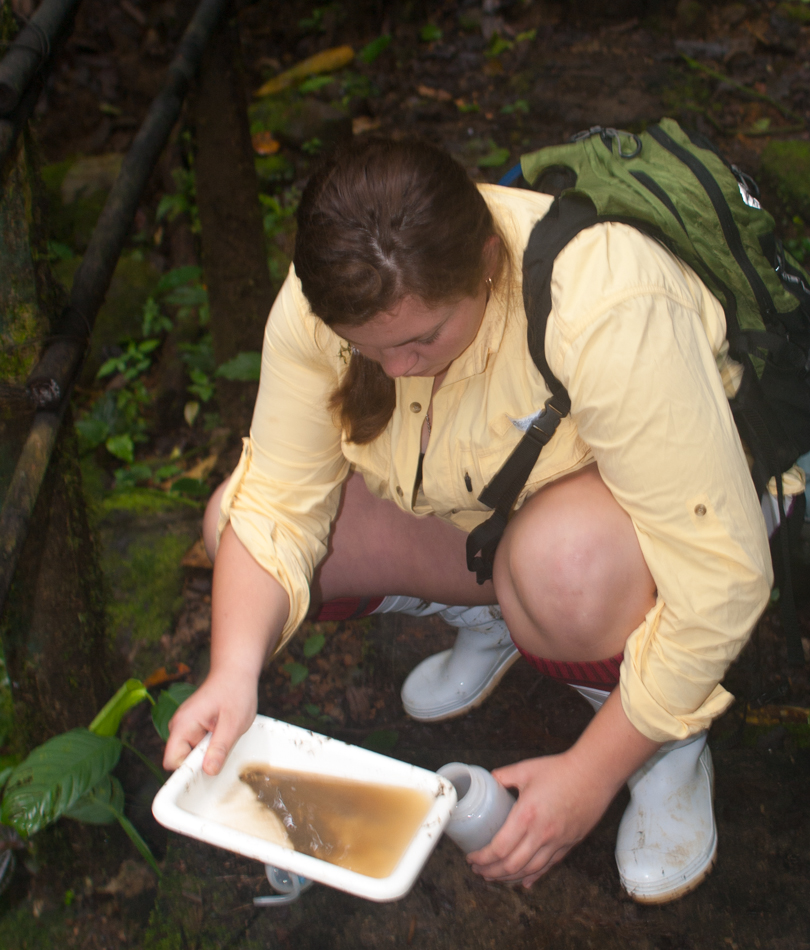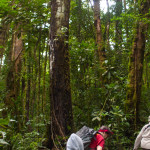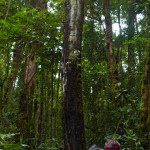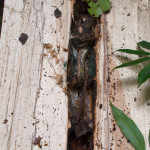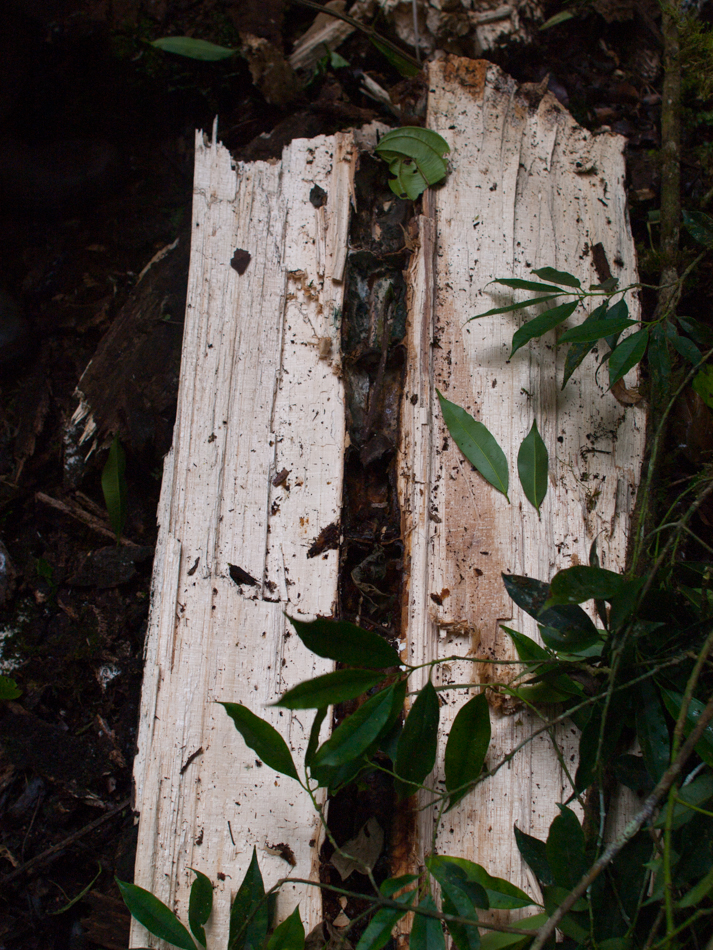Mel and José collected several similar looking, native species for their decomposition experiments. We chose leaves of Miconia appendiculata and an invasive bamboo (collecting leaves here) to compare in their experiments. Here, they collect the M. appendiculata leaves from trees lining the Río Java.
Tag Archives: Costa Rica
Liverwort gametangia and sporophytes
Liverworts are common around stream banks and trail edges at Las Cruces. They form large, mats along steep banks. Some, including the one below, have gamete-producing structures projecting from their flat “leaves”. From these dome-like gametangia, hair like projections (sporophytes) hang and release spores to begin the next generation.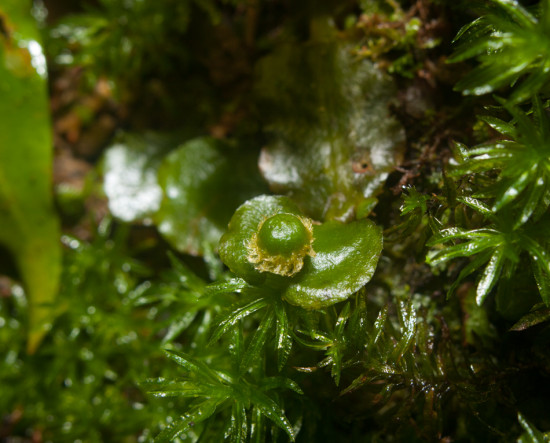
Tree Fern Sori
Mountain-top blueberries
A blueberry (Vaccinium consanguieneum) commonly grows on mountain tops in Costa Rica above 2000 m. The berries tend to be a bit small, and not very sweet. Here’s one in bloom.
Some Streams at Las Alturas
Thickly vegetated headwaters streams scar the mountain-sides in the primary forest at Las Alturas. Currently, not much research is being conducted at the station, but a couple of mentors are interested in setting up i-buttons (remote temperature and humidity monitors) to collect data on an elevational gradient within the forest. This is of interest given some dramatic shifts in forest communities elevation changes (hence, the microclimate of the mountain-side changes), and climate change forecasts in the region. As the regional climate changes, these forest communities are expected to shift up or down in elevation, but communities may disappear if they can’t compensate (e.g., the community at the top of the mountain may have nowhere to go). I think monitoring streams is of interest as well. For instance, alterations in precipitation, which are also predicted by climate change, can lead to altered hydrological regimes within these streams, which could lead to stream community and ecosystem change. Simply picking up a few rocks, I observed hundreds of Simuliids (blackfly larvae), some psephenids (water penny beetles), mayflies, and damselfly larvae.
Perhaps this is a good enough reason for me to visit, and stay, again…
Stream anole
A second species of stream anole, Norops aquaticus, found at Quebrada Cusigno at Las Cruces during a bat-catching trip. The other, which I’ve seen in RBAMB and Hitoy Cerere, is N. oxylophus. One cool distinguishing feature: N. aquaticus has greenish eyes, whereas N. oxylophus has coppery eyes.
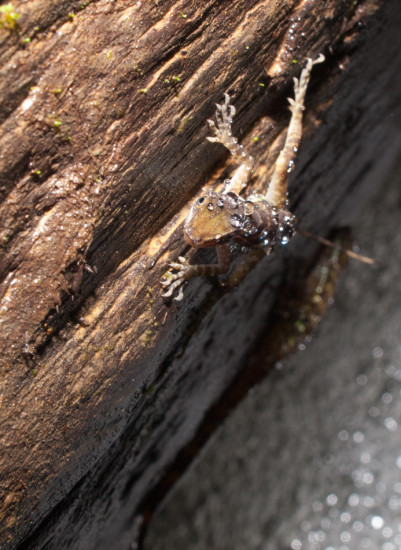
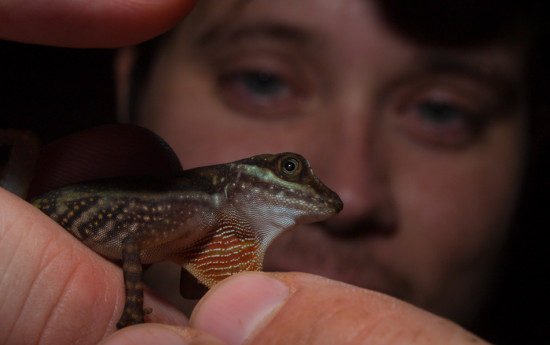
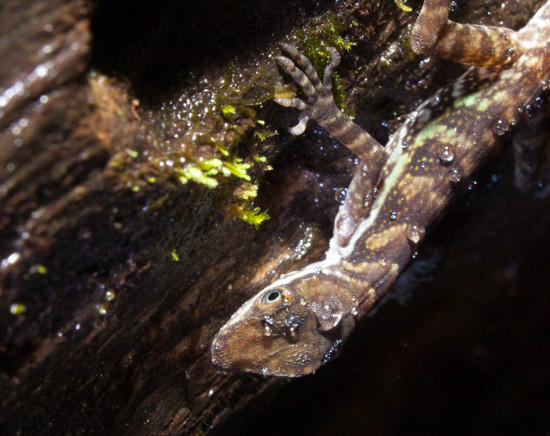
Juvenile ground anole
More tree ferns
Mayfly communities in premontane, headwater streams
Under the guidance of Andy, a graduate of University of Akron and soon-to-be post-doc at University of Chicago, Alicia collects and investigates mayfly (Ephemoptera) communities within headwater streams at Las Cruces.
Big, dead Cecropia
Cecropia is a genus of tropical tree that quickly grows in light gaps and often has some interesting relationships with symbiotic Azteca ants. There are presumibly three species in Costa Rica, and two of the species are the subject of study for several students here with NAPIRE. The third species (maybe) occurs at higher elevations, like at Las Alturas, and the group mentor, Cynthia Saugers, found several specimen. We also came across an extremely large, but recently deceased, specimen here. Most of the time, the diameter of these trees don’t get seem to get more than about 30 cm in diameter (at least from my glancing observations as an aquatic ecologist…).

